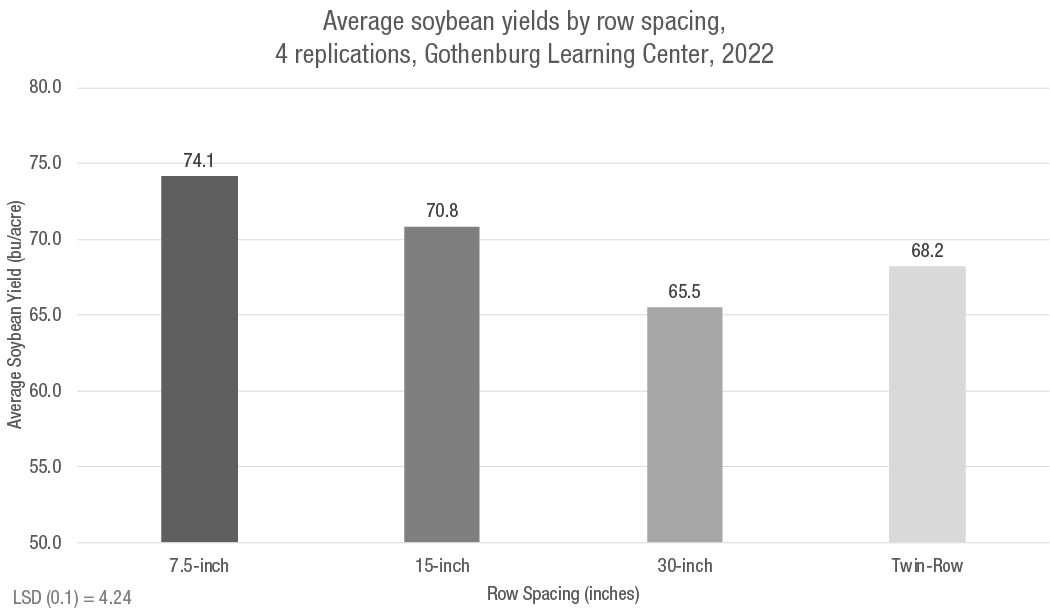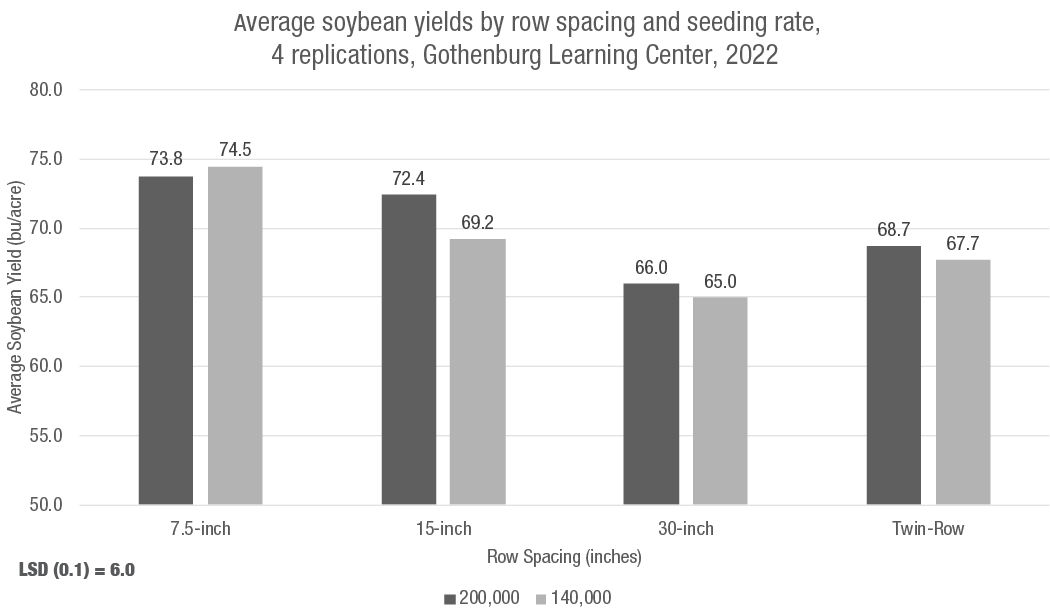Row Spacing and Seeding Rate Impact on Irrigated Soybean Yield
February 14, 2023
TRIAL OBJECTIVE
- Row spacing and seeding rates are two factors that can have a major impact on soybean yield. However, questions remain as to which factor is more important for obtaining optimum yields.
- The objective of this study was to determine the effect of four different row spacings and two seeding rates on soybean yield potential.
RESEARCH SITE DETAILS

- The trial was arranged as a randomized complete block design with four replications and two treatment factors.
- Row Spacing
- 7.5-inch, 15-inch, 30-inch, Twin-Row (Two rows spaced 8 inches apart on 30-inch centers)
- Seeding Rates
- 140,000 seeds/acre and 200,000 seeds/acre
- Row Spacing
- Soybean product used was 2.8 maturity group (MG) XtendFlex® Soybeans.
- Soybeans were fully irrigated throughout the growing season for a total of 9 inches of water applied.
- 29 lb nitrogen (N)/acre, 25 lb phosphorus (P)/acre, 25 lb sulfur (S)/acre, 0.25 lb zinc (Zn)/acre were applied through strip-tillage application prior to planting on 4/14/2022.
- Weeds were controlled uniformly across the study.
- Total grain weight, test weight, and moisture content were collected with a plot combine to calculate yield per acre. Statistical analysis for Fisher’s LSD was performed.
UNDERSTANDING THE RESULTS

- Average soybean yields consistently increased in response to decreasing row spacing.
- Planting soybeans in 7.5-inch rows resulted in significantly higher average yields than both the 30-inch and the twin-row spacing treatments, regardless of seeding rate.
- Soybean yields for the 15-inch row spacing were not statistically different than the yields for the 7.5-inch row spacing but were significantly higher than the 30-inch yields.
- Overall, in this study, the narrowest row spacing of 7.5-inches resulted in the highest soybean yields, whereas the widest row spacing of 30-inches resulted in the lowest soybean yields.

- In this study, soybean seeding rate did not result in significant differences in average soybean yield.
- Increasing the seeding rate from 140,000 to 200,000 seeds/acre did not result in a significant difference in yield regardless of row spacing.
KEY LEARNINGS
- In this study, row spacing was more impactful on soybean yields than seeding rate in a fully irrigated environment.
- In 2022, irrigated XtendFlex® soybeans planted at 140,000 seeds/acre with row spacing at 7.5” helped maximize yield potential.
- The 30-inch row spacing resulted in the lowest yields regardless of the seeding rate.
- Farmers should work with their local seeds sales team member to help identify the best adapted XtendFlex® soybean product for their production systems.
1310_164818